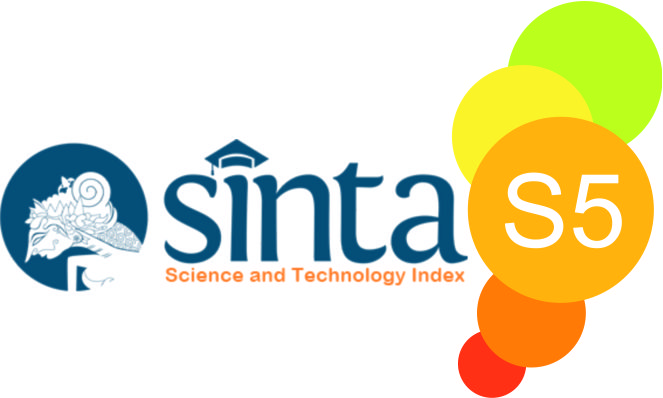Travel Constraints, Trust, Travel Motivation and Travel Intention :
A Case Study of Covid 19 Pandemic
DOI:
https://doi.org/10.23887/jmpp.v6i1.65559Kata Kunci:
travel constraint, trust, travel motivation, travel intentionAbstrak
Referensi
Abubakar, A. M., & Ilkan, M. (2016). Impact of online WOM on destination trust and intention to travel: A medical tourism perspective. Journal of Destination Marketing & Management, 5(3), 192–201.
Andreani, F., & Njo, A. (2021). The impact of travel constraints on travel intention,” in Promoting Creative Tourism: Current Issues in Tourism Research. Routledge, 652–658.
Andreu, L., Kozak, M., Avci, N., & Cifter, N. (2006). Market segmentation by motivations to travel: British tourists visiting Turkey. Journal of Travel & Tourism Marketing, 19(1), 1–14.
Armstrong, R. W., & Mok, C. (1995). Leisure travel destination choice criteria of Hong Kong residents. Journal of Travel & Tourism Marketing, 4(1), 99–104.
Blazey, M. A. (1987). The differences between participants and non-participants in a senior travel program. Journal of Travel Research, 26(1), 7–12.
Chang, S.-H., & Lin, R. (2015). Building a total customer experience model: applications for the travel experiences in Taiwan’s creative life industry. Journal of Travel & Tourism Marketing, 32(4), 438–453.
Chen, Y.-C., Shang, R.-A., & Li, M.-J. (2014). The effects of perceived relevance of travel blogs’ content on the behavioral intention to visit a tourist destination. Computers in Human Behavior, 30, 787–799.
Colquitt, J. A., & Rodell, J. B. (2011). Justice, trust, and trustworthiness: A longitudinal analysis integrating three theoretical perspectives. Academy of Management Journal, 54(6), 1183–1206.
Crawford, D. W., & Godbey, G. (1987). Reconceptualizing barriers to family leisure. Leisure Sciences, 9(2), 119–127.
Crawford, D. W., Jackson, E. L., & Godbey, G. (1991). A hierarchical model of leisure constraints. Leisure Sciences, 13(4), 309–320.
Decrop, A. (2006). Vacation decision making.
Devesa, M., Laguna, M., & Palacios, A. (2010). The role of motivation in visitor satisfaction: Empirical evidence in rural tourism. Tourism Management, 31(4), 547–552.
Furumo, K., & Pearson, J. M. (2007). Gender-based communication styles, trust, and satisfaction in virtual teams. Journal of Information, Information Technology & Organizations, 2.
Gefen, D., Karahanna, E., & Straub, D. W. (2003). Trust and TAM in online shopping: An integrated model. MIS Quarterly, 51–90.
George, R. (2004). Marketing South African Tourism. Oxford University Press, USA.
Howard, D. R., & Crompton, J. L. (1984). Who are the consumers of public park and recreation services? An analysis of the users and non-users of three municipal leisure service organizations. Journal of Park and Recreation Administration, 2(3), 33–48.
Huang, S., & Hsu, C. H. C. (2009). Effects of travel motivation, past experience, perceived constraint, and attitude on revisit intention. Journal of Travel Research, 48(1), 29–44.
Hudson, S. (2000). The segmentation of potential tourists: Constraint differences between men and women. Journal of Travel Research, 38(4), 363–368.
Hudson, S., & Gilbert, D. (2000). Tourism constraints: The neglected dimension in consumer behaviour research. Journal of Travel & Tourism Marketing, 8(4), 69–78.
Hung, K., & Petrick, J. F. (2012a). Comparing constraints to cruising between cruisers and non-cruisers: A test of the constraint-effects-mitigation model. Journal of Travel & Tourism Marketing, 29(3), 242–262.
Hung, K., & Petrick, J. F. (2012b). Testing the effects of congruity, travel constraints, and self-efficacy on travel intentions: An alternative decision-making model. Tourism Management, 33(4), 855–867.
Jang, S. S., & Feng, R. (2007). Temporal destination revisit intention: The effects of novelty seeking and satisfaction. Tourism Management, 28(2), 580–590.
Kerstetter, D. L., Yen, .-Y., & Yarnal, C. M. (2005). Plowing uncharted waters: A study of perceived constraints to cruise travel. Tourism Analysis, 10(2), 137–150.
Kim, N.-S., & Chalip, L. (2004). Why travel to the FIFA World Cup? Effects of motives, background, interest, and constraints. Tourism Management, 25(6), 695–707.
Kluin, J. Y., & Lehto, X. Y. (2012). Measuring family reunion travel motivations. Annals of Tourism Research, 39(2), 820–841.
Lam, T., & Hsu, C. H. C. (2006). Predicting behavioral intention of choosing a travel destination. Tourism Management, 27(4), 589–599.
Lee, B. K., Agarwal, S., & Kim, H. J. (2012). Influences of travel constraints on the people with disabilities’ intention to travel: An application of Seligman’s helplessness theory. Tourism Management, 33(3), 569–579.
Lepp, A., & Gibson, H. (2003). Tourist roles, perceived risk and international tourism. Annals of Tourism Research, 30(3), 606–624.
Li, M., & Cai, L. A. (2012). The effects of personal values on travel motivation and behavioral intention. Journal of Travel Research, 51(4), 473–487.
March, R. S., & Woodside, A. G. (2005). Woodside, Tourism behaviour: travellers’ decisions and actions. Cabi Publishing.
Morgan, R. M., & Hunt, S. D. (1994). The commitment-trust theory of relationship marketing. Journal of Marketing, 58(3), 20–38.
Nicolau, J. L., & Mas, F. J. (2006). The influence of distance and prices on the choice of tourist destinations: The moderating role of motivations. Tourism Management, 27(5), 982–996.
Nyaupane, G. P., & Andereck, K. L. (2008). Understanding travel constraints: Application and extension of a leisure constraints model. Journal of Travel Research, 46(4), 433–439.
Schurr, P. H., & Ozanne, J. L. (1985). Influences on exchange processes: Buyers’ preconceptions of a seller’s trustworthiness and bargaining toughness. Journal of Consumer Research, 11(4), 939–953.
Sirdeshmukh, D., Singh, J., & Sabol, B. (2002). Consumer trust, value, and loyalty in relational exchanges. Journal of Marketing, 66(1), 15–37.
Tang, Y. (2014). Dark touristic perception: Motivation, experience and benefits interpreted from the visit to seismic memorial sites in Sichuan province. Journal of Mountain Science, 11(5), 1326–1341.
UNWTO. (2019). World Tourism Organization (UNWTO) (2019 Editi). https://doi.org/10.18111/9789284421152
Venkatesh, V. (2006). Where to go from here? Thoughts on future directions for research on individual‐level technology adoption with a focus on decision making. Decision Sciences, 37(4), 497–518.
Walker, G. J., & Virden, R. J. (2005). Constraints on outdoor recreation. Constraints to Leisure, 201, 219.
Zhang, Y., Li, J., Liu, C.-H., Shen, Y., & Li, G. (2020). The effect of novelty on travel intention: the mediating effect of brand equity and travel motivation. Management Decision.










